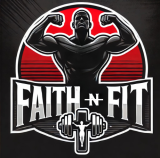How much pain does it take in Bible-based fitness to lose weight or build muscle? The fitness journey isn’t just physical—it’s deeply spiritual. In Bible-based fitness, we look beyond the gym and into the heart, where discipline, obedience, and endurance shape not just our bodies but our souls. Many people ask, “How much discomfort do I have to endure to lose weight or build muscle?” The truth is—some discomfort is necessary, but when we view it through Scripture, it becomes purposeful, not painful.
The Bible teaches that suffering is part of the human experience, but it also gives us a framework for how to endure it with purpose and hope.
Suffering in Scripture: A Normal Part of Life
Job 14:1 reminds us, “Man that is born of a woman is of few days, and full of trouble.” From the start, Scripture sets the expectation that discomfort, trials, and adversity are part of life. Whether it’s in health, relationships, or spiritual growth, trouble isn’t a surprise—it’s a given.
But not all suffering is the same. In fitness, we distinguish between the suffering that leads to growth (such as pushing through a tough workout) and the suffering that results from disobedience (such as poor choices with diet or lifestyle).
Romans 6:23 tells us, “For the wages of sin is death.” Every action comes with a price. In Galatians 6:7, Paul reinforces this truth: “Be not deceived; God is not mocked: for whatsoever a man soweth, that shall he also reap.”
This means if you overeat, skip training, or neglect your health, you will reap the results in your body—just as if you push hard, eat well, and stay consistent, you’ll also reap the results. You can’t cheat the system—spiritually or physically.
The Role of Longsuffering in Bible-Based Fitness
Galatians 5:22–23 lists the fruit of the Spirit, and one of them is longsuffering, or patient endurance through hardship. It’s not just about waiting—it’s about how you wait, how you suffer, and whether you endure it with grace and obedience.
Longsuffering is crucial in fitness:
- When hunger creeps in during a calorie deficit, longsuffering keeps you grounded.
- When your muscles burn during high reps, longsuffering says, “One more set.”
- When progress feels slow, longsuffering reminds you that joy comes in the morning (Psalm 30:5).
In other words, discomfort is not the enemy—it’s the pathway to transformation.
Obedience Is Better Than Sacrifice
In 1 Samuel 15:22, the prophet Samuel tells Saul, “To obey is better than sacrifice.” Many people punish themselves with extreme diets, brutal workouts, or unhealthy expectations, thinking they’re making sacrifices. But true transformation comes from obedience to the process, not punishment.
Obedience means:
- Following your workout plan even when it’s hard.
- Sticking to your macros or meal plan instead of emotional eating.
- Resting when needed, rather than overtraining to earn results.
Disobedience often leads to unnecessary suffering—fatigue, burnout, or injury. Obedience turns discomfort into development.
How Much Suffering Should You Expect?
Let’s use some math to answer this. Muscle building and fat loss both follow physiological laws:
- Muscle Building: Requires progressive overload, calorie surplus, protein, and rest. Expect muscle soreness (DOMS), fatigue during high-volume training, and delayed gratification.
- Fat Loss: Requires a calorie deficit, high-protein intake, and increased NEAT (non-exercise activity thermogenesis). Expect hunger, mental fatigue, and plateaus.
Use this Bible-based suffering scale to set realistic goals:
- Light Suffering (1–2 discomforts daily): Walking, basic meal planning, light hunger, basic gym routine.
Expect visible changes in 8–12 weeks. - Moderate Suffering (3–4 discomforts daily): Structured meal prep, strict calorie counting, training to failure, higher intensity cardio.
Expect major results in 12–16 weeks. - Heavy Suffering (5+ discomforts daily): Competitive level dieting or training, fasted cardio, advanced lifting programs, limited social flexibility.
Expect accelerated changes in 6–10 weeks, but requires high spiritual and emotional maturity.
Pick your goal based on the level of suffering you’re willing to endure. Don’t commit to a 12-week transformation if you’re only willing to suffer for 2 days. Suffering without obedience leads to burnout.
A Strategy for Incorporating Suffering Into Your Goals
- Count the Cost (Luke 14:28): Don’t start a plan without knowing what it requires.
- Sow What You Want to Reap (Galatians 6:7): Make sure your daily choices align with your desired outcome.
- Use the Fruit of the Spirit: Cultivate patience, self-control, and longsuffering as your fuel.
- Rest in God’s Timing: Psalm 30:5 says, “Weeping may endure for a night, but joy comes in the morning.” Results take time, but God’s promise is that endurance leads to reward.
- Obey, Don’t Overdo: If your suffering is not paired with obedience, it’s wasted. Stay within the boundaries of what builds you, not what breaks you.
Final Thoughts: Bible-based fitness
In Bible-based fitness, suffering is expected—but it’s never wasted. It becomes the soil where spiritual fruit is cultivated and physical transformation takes place. Whether you’re lifting weights, losing pounds, or learning to endure discomfort with grace, remember:
- Some suffering is part of the process
- Obedience turns suffering into results
- Set goals based on what you’re willing to endure
- Don’t do more than you’re willing to pay for—because what you sow, you will reap
Discomfort today builds discipline for tomorrow. Stay faithful, stay obedient, and let your results be a reflection of your willingness to suffer well—for the right reasons.




